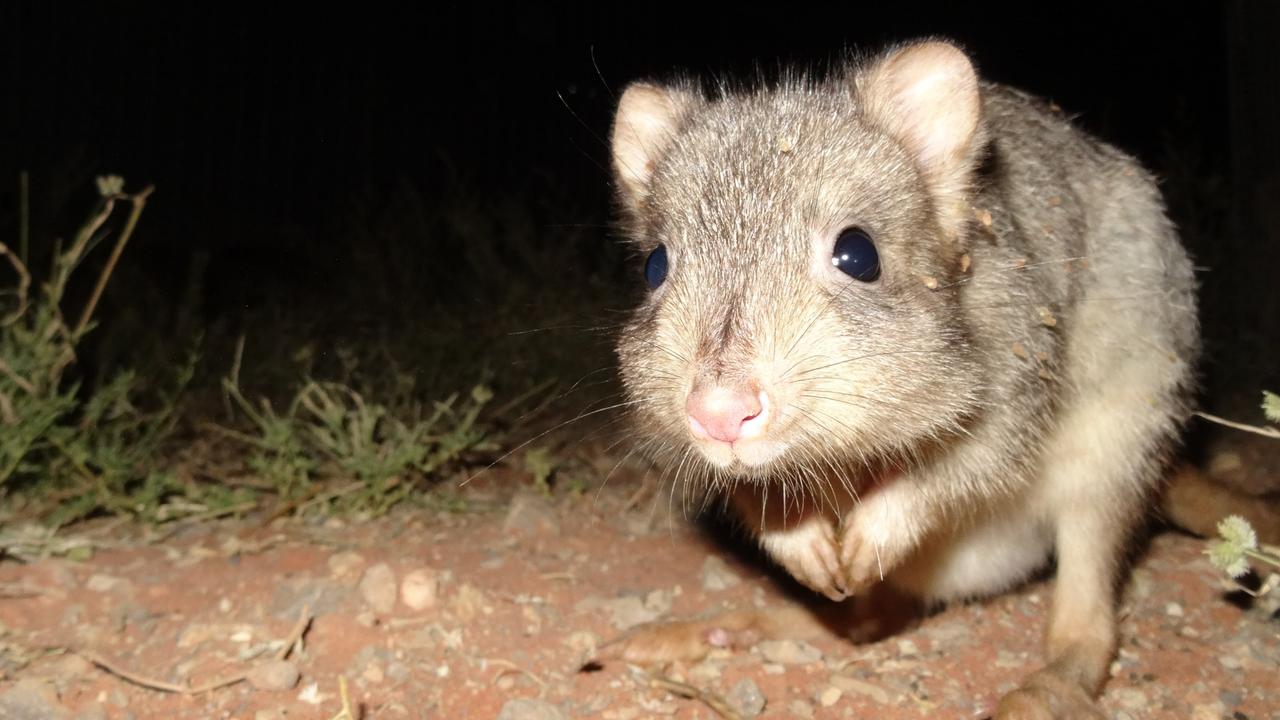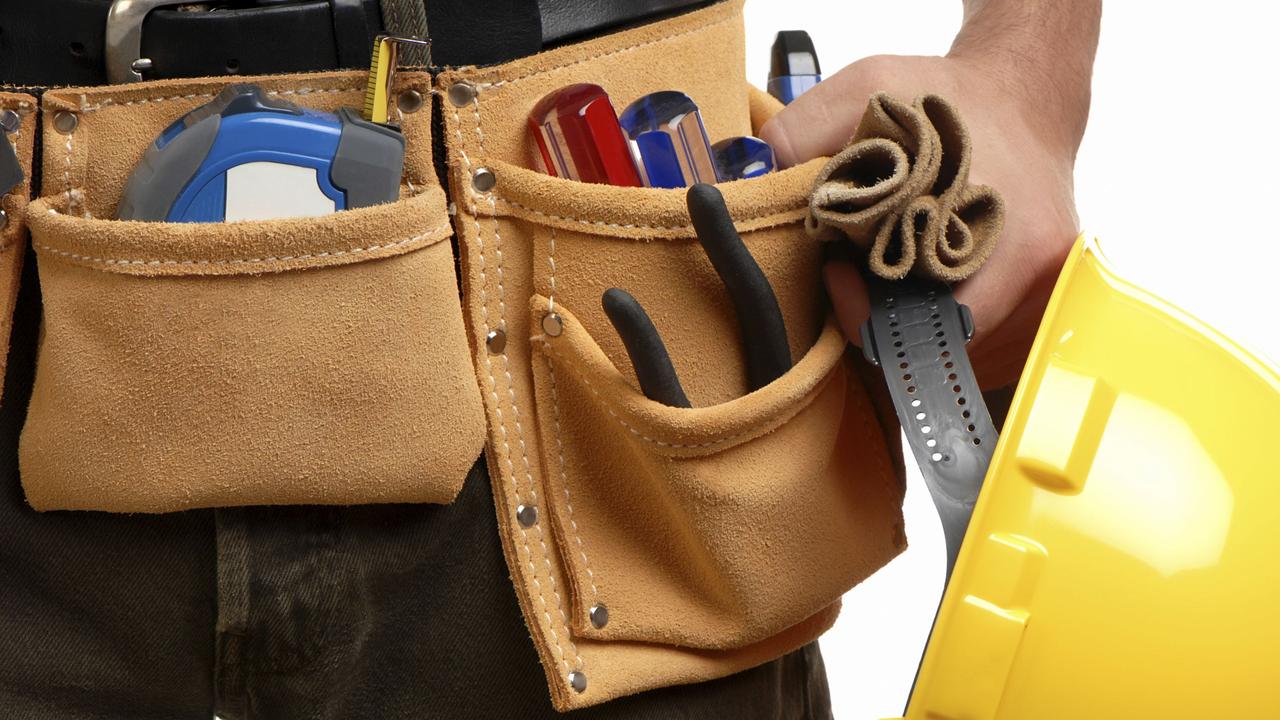Nuclear Dossier: Everything you need to know about the nuclear waste dump issue
HAVE you got nuclear waste dump information overload? Don’t know where to start to understand it? Here’s everything you need to know to form an opinion.

SA News
Don't miss out on the headlines from SA News. Followed categories will be added to My News.
HAVE you got nuclear waste dump information overload? Don’t know where to start to understand it? Here’s everything you need to know to form an opinion.
---------
PEOPLE POWER HOLDS THE KEY
Daniel Wills
NUCLEAR storage will only proceed in South Australia if there is community approval and political consensus, but it remains unclear how these will be achieved and tested.
Federal and state parliaments have laws which ban certain aspects of the nuclear fuel cycle, and the construction of new facilities would need approvals and ongoing regulation.
In addition, a business case provided to the royal commission warns experience around the world shows failure to win agreement from communities dooms projects to failure.
Both major federal parties agree the country needs to find a central site where low-level radioactive materials can be stored. This includes goggles and protective equipment exposed to radiation in creating medicines, much of which is stored in hospitals and insecure sites.
Six national sites have been earmarked – two near Kimba and one north of Port Augusta. A final selection is expected next year, with communities to be consulted.
However, the major financial gain found by the royal commission would be in housing high-level waste created in other countries.
Both federal parties have encouraged debate. Federal Resources and Energy Minister Josh Frydenberg said he was “prepared to entertain the idea of a deeper involvement of SA in the nuclear fuel cycle”.
“Certainly, there needs to be a political consensus,” he said.
Federal Labor Leader Bill Shorten said he was “interested in economic opportunities”.
“We’ve got to make sure the numbers stack up, we’ve got to make sure that the environmental safeguards stack up and the community supports it,” he said.
However, that support may be soft within his own party. Labor transport spokesman Anthony Albanese has expressed scepticism, and the party’s national platform would need to be changed with a vote of members before there was enough agreement to pass laws required.
Premier Jay Weatherill is also not ruling out the prospect.

However, there is strong support within SA Labor for the storage facility to be pursued and Liberal support for investigations.
Opposition Leader Steven Marshall said: “We need to weigh up the opportunities and risks associated with expanding SA’s role in the nuclear fuel cycle and further work is required”.
Family First Senator Bob Day is a strong supporter of expanding the nuclear industry and independent Nick Xenophon is open-minded. The Greens are rigidly opposed.
Potentially the most challenging elements are determining what amounts to community approval across the state and nation, as well as finding agreement from a community to host the dump.
A Jacobs MCM study written for the royal commission warns the project is doomed to fail if it is forced on a community.
It proposes a process where areas of the state which are inappropriate for weather or geological reasons be first ruled out, and then possible host communities invited to bid.
Commissioner Kevin Scarce says a road map for the possible site selection is likely to be included in his final report. Selection could take up to five years, with a site operational in 11.
Mr Weatherill said Cabinet would ultimately have to decide if community agreement had been reached before further steps could be taken.
“The things which are much less capable of precise measurement are political consensus and community consent,” he said. “It’s as real as any of those technical issues.
“(It’s) absolutely critical that first we are satisfied as a community of the factual basis. At the end of the day, this is about the commonsense judgment of everyday South Australians.”
Clean, green image won’t be spoiled
Paul Starick
HOUSING a repository for high-level overseas-spent nuclear fuel will not damage South Australia’s renowned clean and green image, says royal commissioner Kevin Scarce.
Addressing a long-held fear about radioactive waste, Rear Admiral Scarce highlighted the royal commission’s interim finding that there was no compelling evidence that a waste dump would adversely affect other economic sectors.
But the report does warn a major nuclear accident would trigger profound impacts on tourism, agriculture and property industries.
“We’ve been very open to receiving evidence about the proposition that a nuclear industry would impact upon the green, clean image,” Rear Admiral Scarce told the Sunday Mail.
“We’ve received no evidence, no submissions with any evidence. We’ve received some submissions saying it would but no basis.
“In fact, when we go overseas and go to places like France, Finland, there’s no evidence that the nuclear industry is impacting on their clean, green image.
“There’s no evidence to suggest that in France food and wine isn’t treated with global respect.”
Rear Admiral Scarce said he hoped there would be more debate on the issue during public consultation before the royal commission’s final report on May 6.
Alarm about SA’s clean, green image was the centrepiece of former premier Mike Rann’s successful campaign against a national low-level nuclear waste dump proposed for a sheep station near Woomera. Trumpeting a victory for common sense when the-then prime minister John Howard abandoned the plan in mid-2004, Mr Rann said: “I didn’t want this radioactive waste dump to scar our Outback and damage our clean, green image.’’
He said the people of SA were the winners from Mr Howard’s backdown and “so are their children and future generations”.
That repository would have taken material such as surgical gowns and test tubes now stored at hospitals and universities.
The high-level repository proposed by the Nuclear Fuel Cycle Royal Commission would house imported spent nuclear fuel and some intermediate-level waste in deep underground chambers.
The royal commission’s tentative findings say there is no compelling evidence nuclear facilities would affect other sectors, provided they were operated safely and securely.
“There is a perception there would be an impact, which would need to be addressed in the process of obtaining community consent for any proposal,” the tentative findings say.
“In the event of a major nuclear accident, adverse impacts on the tourism, agriculture and property sectors could potentially be profound.”
GROUNDS FOR COMPETITIVE ADVANTAGE
Clare Peddie
STORAGE and disposal of the world’s worst waste in a yet-to-be-decided South Australian location was considered “likely to be technically feasible” in the tentative findings of the Nuclear Fuel Cycle Royal Commission.
“Why South Australia? Well I think, based upon the evidence that we’ve seen, we have a unique combination of attributes,” royal commissioner Kevin Scarce said.
“Our stable geology, the relatively low levels of seismic activity across large parts of the state, the arid environment, a stable economic and political structure and a pre-existing sophisticated framework for securing long-term agreements with right-holders.
“Collectively I think this gives us a global competitive advantage and I think that client nations will be looking very closely at the proposals.”
While siting a facility was not part of the commission’s terms of reference, “the underlying Archean geological structure, the Gawler Craton” was identified.
The Department of State Development describes the Gawler Craton as “the oldest and largest geological province in South Australia”.
University of Adelaide geologist Associate Professor Vic Gostin says, a craton is a “very, very thick”, solid and stable portion of the Earth’s crust.
“I can say, hand on my heart, it’s safe because at Roxby Downs they have to mine through a thousand feet or something of flat-lying shales, or siltstones, or muds compacted into shales, they have to mine through horizontal stuff that’s been lying around there for 700 million years,” he said.
Now retired after 40 years of teaching earth science, the Honorary Research Fellow suspects the commission is referring to an area halfway between Port Augusta and Roxby Downs.
But the Department of State Development says “many parts of South Australia are considered geologically stable and on a global-scale, SA can be considered to include some of the most geologically stable parts on Earth”.
“Geological stability is a key requirement for the long-term and safe storage of nuclear waste products,” a spokesman said.
Flinders University groundwater scientist Professor Craig Simmons, SA Scientist of the Year and Scientist in Residence at The Advertiser, said the Gawler Craton appeared, at first glance, to have all the hallmarks of a textbook long-term storage site.
Along with stable geology, research suggests the area has suitable hydrogeology with deep, very slow-moving groundwater.
But more work needed to be done.
Professor Simmons said we also needed to plan long into the future. “We need to think much longer term, 10,000 plus years, which is actually on geological time scales... Sea levels go up, not one metre but hundreds of metres on these timescales, it’s totally different,” he said.
Site selection would also consider the potential for disturbance of sites of Aboriginal cultural or heritage significance and the commission has highlighted the need to “engage early” with communities that may be affected.
The timeline for the project allows 10 years to establish an interim storage facility and associated infrastructure from the moment the project gets the go-ahead.
It would then begin to receive used fuel and associated revenues at 11 years, which would fund building of the underground facility. That would take about 20 years, with transfers from the interim store to the geological disposal facility starting 28 years after the decision to commence the project.
Imports of used fuel would cease 83 years after that “project decision” but work would continue on site until 120 years had passed, when the geological facility would close.
KEY FACTS
South Australia has some of the most stable geological formations in the world, making it attractive for long-term waste disposal.
Arid climate and scant groundwater reduce risks of leaks – but safety questions must cover many centuries.
Existing legal framework on land rights and regulatory regime for major projects gives kickstart to process.
Royal Commission has urged people to challenge the facts in its report.
How the nuclear waste storage would work
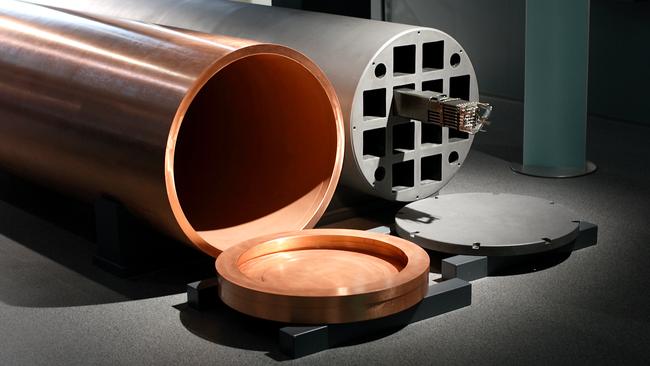
1. Spent fuel is stored above ground for decades, gradually cooling and reducing in radioactivity. The fuel assemblies are then dried and placed in corrosion-resistant copper canisters that are capped then welded closed.
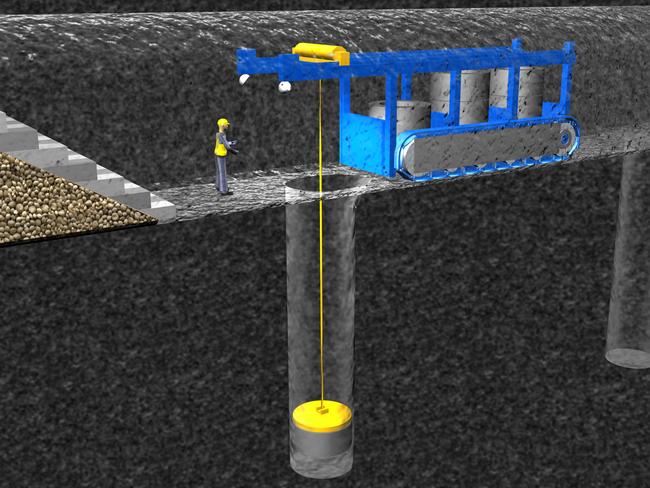
2. A network of tunnels is drilled at a depth of about 400 metres into solid bedrock that helps isolate the nuclear waste from above-ground organic nature and is expected to create more stable and predictable conditions into the future.
3. Individual disposal holes are drilled at the bottom of the tunnels at 10 metre intervals to hold the copper canisters. These are lined with bentonite buffer blocks that naturally expand and seal to protect the canister from groundwater and rock movement. The canisters are moved through the network and placed inside one of these holes, then topped with more buffer blocks. The hole is then filled with clay blocks and pellets that prevent water entering the hole and keeps the canister in place.
4. Once the entire tunnel is filled a thick concrete plug is put at its end.
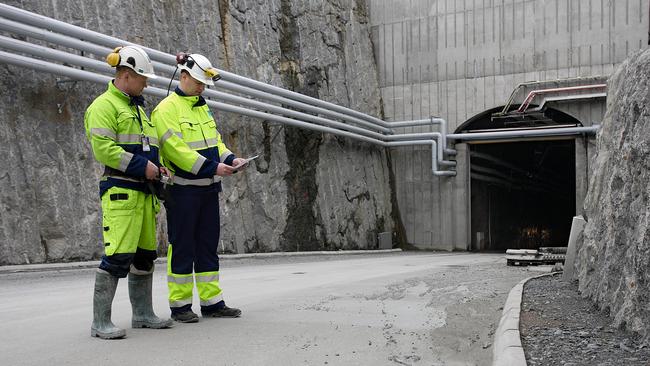
5. Tunnels are gradually constructed and backfilled until the top part of the tunnel network and shafts are filled with boulders. Eventually, the above-ground buildings are removed and the site landscaped.
SITE FOR RADIOACTIVE WASTE WILL BE A SPLIT DECISION
Paul Starick
THE royal commission’s proposal to accept 138,000 tonnes of overseas nuclear waste is separate to the long-running hunt for a national low-level waste dump.
In the latest move to find a site for the national repository, Resources and Energy Minister Josh Frydenberg in November last year short-listed six sites – three of them in South Australia.
These are at Cortlinye and Pinkawillinie, near Kimba, and at Barndioota, north of Port Augusta. Public consultation about these sites, which were volunteered by landowners, will continue until March 11.
Two of the SA sites are likely to be on a final short-list of two to three ahead of a final decision by Mr Frydenberg by the end of the year.
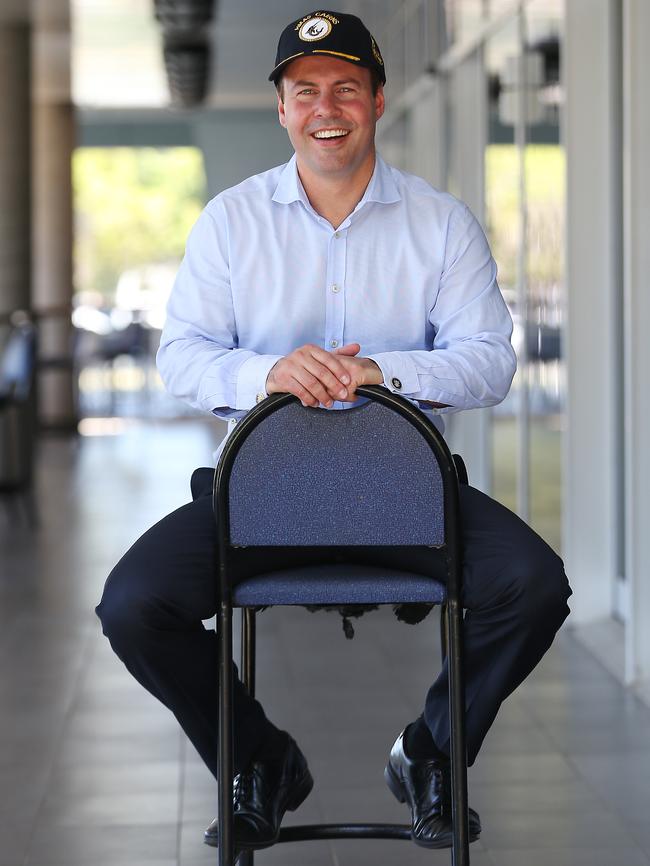
“The royal commission is a separate and distinct initiative to the (Federal) Government’s process to establish a National Radioactive Waste Management Facility, which is well underway,” Mr Frydenberg said. “This facility would store Australian-generated, low and intermediate-level waste only. It cannot and will not be built to store radioactive waste generated overseas or high-level waste.”
Mr Frydenberg, in a statement about the royal commission’s findings, said an expansion of Australia’s nuclear industry beyond its current scientific and medical purpose would require significant legislative and regulatory change.
He said Australia now had the equivalent of about two Olympic-sized swimming pools of low-level waste, which included laboratory items such as paper, plastic and glassware, along with material used in medical treatments. It is now stored at more than 100 sites across the country.
The low-level site would have a building to store intermediate-level waste generated by the reprocessing of spent fuel rods from the research reactor at Sydney’s Lucas Heights.
Former prime minister John Howard in 2004 ditched plans for a national low-level dump at a sheep station near Woomera after a successful campaign spearheaded by the-then premier Mike Rann.
Mr Frydenberg has been keen to emphasise the benefits to the selected site’s community, including better infrastructure and roads, plus $10 million in funding for local projects.
“This will (also) provide sustainable, well-paying jobs for the local community, not just on site but also in surrounding areas,” he said.
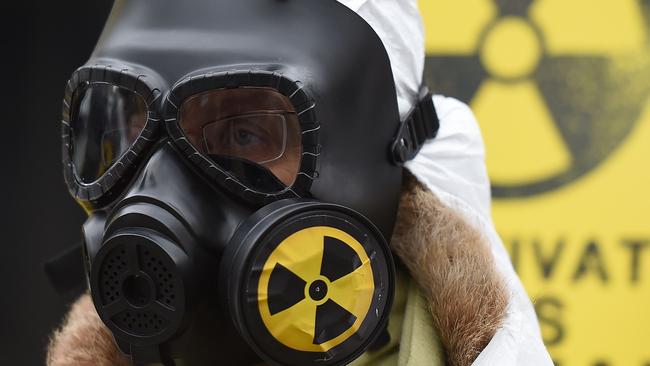
DAMNED IF U DO AND THEN DAMNED IF U DON’T
Cameron England
THE strong message from the mining industry on the future of uranium mining is that it is positive – but that regulation should be loosened to allow miners to move more quickly.
The counterarguments, from numerous proponents were that the economics of increasing uranium mining were poor, and the environmental record of the industry had also been found wanting.
The Nuclear Fuel Cycle Royal Commission’s tentative findings released this week, found that our uranium exports could triple by 2040 but the overall economic impact of an expansion in the uranium mining sector would not be significant.
“An increase in uranium mining and milling of (a factor of three) would add more than $300 million to state GSP (or 0.23 per cent) and enable the employment (direct and indirect) of approximately 800 persons on a full-time basis by 2030,’’ the findings say.
The outlook for a significant increase in the uranium price in the short-term was weak.
SA’s Aboriginal community, via a number of submissions representing numerous indigenous groups, said it had been marginalised and exploited in previous discussions around nuclear and uranium issues.
There was also a strong belief that uranium mining was inconsistent with their connection with country and they were adamantly opposed to any expansion.
Some of the world’s largest uranium and nuclear companies weighed into the debate, with French company Areva and BHP Billiton arguing that there was likely more economically viable uranium yet to be mined.
The mining industry was in lock-step on one issue – that uranium mining should be removed from the Commonwealth Environment Protection and Biodiversity Conservation (EPBC) Act.
While mining is regulated at the state level, uranium mining has to pass through the state and federal regulators before it can go ahead.
The industry says this is a costly disincentive and unnecessary as uranium mining has proved itself to be safe.
“Recognition that uranium mining is consistent with other forms of mineral extraction from a risk perspective should lead to the removal of some of the unnecessary and duplicative regulation that has accumulated in Australia,’’ BHP says in its submission.
The South Australian Chamber of Mines and Energy says there are “minimal risks” associated with uranium mining “as evidenced by the historical performance and management of companies and the regulator’’.
In a large joint submission, a group of environmental groups argues this is incorrect and points to 31 radiation leaks at BHP’s Olympic Dam site between 2003 and 2012 and revelations in 2013 that the company’s radiation plans appeared to be out of date.
In terms of whether there is more uranium out there, Areva was very confident.
“There are almost certainly additional opportunities to locate economic deposits of uranium within SA,’’ the French company says.
Aboriginal groups were strongly opposed to more mining, saying they had not been treated with respect in the past. The Kaurna group – among the more prominent indigenous groups in SA – was unequivocal.
“Kaurna do not support further exploration, extraction and mining of uranium,’’ their submission says. Another prominent group, the Kokatha, agreed, but feared a decision had already been made.
NUKE POWER CASE DOESN’T STACK UP
Christopher Russell
THE royal commission says there is no business case to build a nuclear power station in South Australia but the nation should keep the option on the table.
The world, including Australia, needed to find ways of generating electricity with lower greenhouse gas emissions, Royal Commissioner Kevin Scarce said.
“If we’re thinking about what’s the most pressing challenge for the community in the future, a lot of us think that it’s climate change,” he said.
“How do we develop technologies that enable us to get to zero carbon emissions from electricity generation by 2050.
“That is a very big hurdle. Based on what we’ve seen, nuclear should be part of the consideration of technologies to meet that challenge.”
Rear Admiral Scarce said he did not foresee nuclear replacing renewable energy sources such as solar and wind.
Rather multiple low-emission technologies would be needed.
“We believe nuclear is a low carbon energy source,” he said. “It is comparable with renewable technologies.”
The commission heard greatly varied estimates contrasting greenhouse gas emissions from different power sources.
This included research cited by the Australian Academy of Technological Sciences and Engineering, an independent, non-government group with more than 800 fellows.
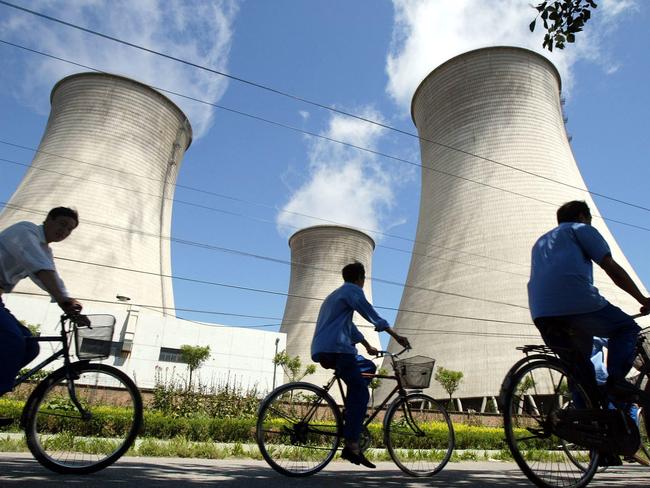
ATSE found life-cycle emissions from nuclear were similar to wind and solar, according to most scientists.
Rear Admiral Scarce said it was a “challenge” to convince many of the people who accept scientific studies identifying global warming that they also should accept the scientific studies saying the nuclear industry can be managed safely.
“There’s been a lot of fear generated in relation to the nuclear industry,” he said.
The first issue the commission considered when looking at nuclear power plants was their safety.
This included examining the major accidents around the world, especially Fukushima Daiichi in Japan, Chernobyl in Ukraine and Three Mile Island in the US.
“Despite safety improvements we acknowledge there are no guarantees,’’ he said.
“But taking this into account we found evidence of safe operations and improvements in nuclear power which shouldn’t discount nuclear power on the basis of safety.”
The focus in the public arena on accidents was understandable because they were so dramatic.
However, there was no credible evidence of significant loss of life.
While there had been many news reports on the accidents, little had been written about the positive aspects.
Collectively, power stations had operated for more than 16,000 years in 33 countries with very few accidents.
US researchers estimated that so far global use so far of nuclear rather than fossil fuels had reduced emissions so much that 1.8 million deaths had been prevented.
The commission said SA’s electricity market was characterised by high peaks in demand on hot summer days, a reliance on electricity imported from Victoria to meet supply gaps, increasing solar use and a high proportion of power coming from wind.
Overall demand in SA was falling and without building big powerlines to sell electricity to the eastern states, there was no viable financial case for a nuclear plant in SA.
The commission said there was insufficient analysis of the National Electricity Market with a view to identifying the best way to achieve low-carbon, reliable power at the lowest possible system cost.
Tidal, geothermal and carbon capture and storage technologies remained unproven.
Battery storage had potential but was not cost competitive

